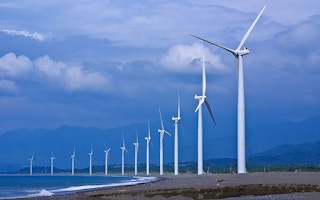The world took an unexpected turn last year. The Covid-19 pandemic has pushed a number of countries into recession, and Southeast Asia is no different. The region’s GDP shrunk by 2 per cent in 2020, and although its economy is forecast to grow 5.2 per cent in 2021 and its GDP to nearly triple by 2040, a bumpy road to recovery lies ahead.
To continue reading, subscribe to Eco‑Business.
There's something for everyone. We offer a range of subscription plans.
- Access our stories and receive our Insights Weekly newsletter with the free EB Member plan.
- Unlock unlimited access to our content and archive with EB Circle.
- Publish your content with EB Premium.
The coronavirus has heavily impacted Southeast Asia’s energy sector, putting the bloc’s energy resilience to the test. Mobility restrictions and lockdowns caused energy demand to plunge and many projects to come to a standstill. The oil and gas sectors were hit particularly hard, with the price of oil nosediving, stalling explorations and hurting production. To some degree, the renewable energy sector has also been impacted amid disruptions to supply chains and within the workforce, but it has not been dealt as severe a blow as other energy sectors.
This year could be a significant turning point for renewables in Southeast Asia. Here are three predictions of what 2021 has to offer for the region’s clean energy sector as countries lift their economies back onto their feet.
Vaccine distribution will push Southeast Asia to pursue a green recovery
With close to two million people infected and new Covid-19 cases still increasing in Southeast Asia, a vaccine is the last resort to end the pandemic. Southeast Asian nations began rolling out vaccines earlier this year. This mammoth effort comes with complex challenges, but the distribution of medical supplies is also set to increase economic activity, which in turn will send the region’s energy demand rising.
In 2021, it is forecasted that 9 billion vaccines will be produced globally. Southeast Asia, the world’s third most populous region, is expected to receive a big chunk of these deliveries, which will require adequate cold supply chains that need to be powered by electricity.
The mass vaccinations underway will need reliable energy supply, and this is where renewables come into play. Especially in remote areas, the electricity needed in hospitals for vaccine storage is often supplied by diesel generators, which are costly and dirty. Southeast Asia needs cleaner alternatives to ensure sustainable and decentralised power generation for healthcare facilities.
Efforts to incorporate more renewables as governments step up climate action
Southeast Asian nations are expected to re-evaluate current power development plans this year as priorities shift, making renewable energy deployment a key priority.
This transformation has already begun across the region. The Philippines announced a coal moratorium last October, pledging to ban the construction of new coal power plants. Alongside this, the country’s Department of Energy is opening its geothermal market to more foreign investment and plans to launch other support schemes for renewables.
Vietnam is looking to slash half of the coal power capacity in its current power development plan this decade to make more room for renewables and natural gas in the energy mix. Indonesia has also announced plans to overhaul the country’s power mix due to Covid-19, including cancelling approximately 14.5 gigawatts (GW) of coal power out of 35 GW in total.
Renewables are poised to play a bigger role in Southeast Asia’s power sector this year as more of the bloc’s member states jump on the bandwagon. More opportunities for solar are popping up in Cambodia as the country begins to catch up with its neighbours, and Myanmar, despite the pandemic, successfully completed its first round of solar auctions with a total capacity of 1.06 GW last year.
Growing climate commitments are also set to spur the region’s energy transition. As of 2020, Singapore, Brunei Darussalam, and Vietnam have submitted their updated Nationally Determined Contributions (NDC)—or emission reduction pledges—to the United Nations (UN), and more clean energy is key to achieving these goals.
To cope with ever-increasing energy demand, Southeast Asia will need to drive renewable energy development. This will reduce air pollution, cut carbon emissions to fight climate change, and improve energy security, with countries less reliant on imported fossil fuels. The fluctuating and intermittent supply of solar and wind power—often cited as a barrier to Southeast Asia’s energy transition—can be managed through more regional electricity trade and battery storage, the deployment of a variety of clean energy technologies, and emerging solutions such as green hydrogen.
Global political changes will provide more opportunities for clean energy collaboration
Joe Biden’s victory in the United States presidential election last year was good news for Southeast Asia’s energy sector and climate commitments. Biden’s first steps as President indicate where the country is headed in its efforts to combat global heating.
Hours after being sworn in, he returned the nation to the Paris Agreement. Seven days after the inauguration, his administration issued an executive order on tackling the climate crisis at home and abroad, highlighting the country’s willingness to work together with nations across the globe to pursue green recovery actions and a clean energy transition, with ambitions to achieve net-zero emissions by 2050. This means there are opportunities for collaboration between the US and the Association of Southeast Asian Nations (Asean).
Biden’s emphasis on the need for climate action will see more opportunities for climate-related and renewables projects emerge globally. Countries like the Philippines, for instance, are expecting to draw more investment for clean energy.
Besides the US’s change in direction, China’s new climate agenda—following its pledge to peak carbon dioxide emissions before 2030 and achieve carbon neutrality by 2060—will also unlock more opportunities for clean energy collaboration, including in Southeast Asia.
To hit its ambitious climate targets, China will need far-reaching policy changes and an economic transformation, as it is currently heavily dependent on fossil fuels. But its rising coal use aside, China officially blocked coal imports from Australia and remains committed to renewables and electric vehicles. China has also set a global example by raising renewable energy subsidies by 5 per cent this year, with solar receiving the biggest share of the increase. This makes it likely that clean energy investment under China’s Belt and Road Initiative (BRI) will rise starting in 2021.
With several of the world’s largest emitters making new climate pledges, there is huge potential for collaboration for Southeast Asia. To benefit from these political shifts and pursue a green recovery, the region needs to forge closer ties with players like the US and China and align its development with their climate and energy agendas. That way, Southeast Asia can create more green jobs and increase its renewable energy manufacturing capacity in the post-Covid era.
The future looks bright for clean energy in Southeast Asia. If the region takes advantage of the opportunities emerging, the energy transition—hamstrung by Covid-19—is set to pick up momentum again this year. By embracing renewables, the region will not only accelerate its post-pandemic recovery, but do so sustainably.
Nadhilah Shani is the Power, Fossil Fuel, Alternative Energy and Storage Officer at the Asean Centre for Energy.
Gabriella Ienanto is an intern at the Power, Fossil Fuel, Alternative Energy and Storage Department at the Asean Centre for Energy.



















